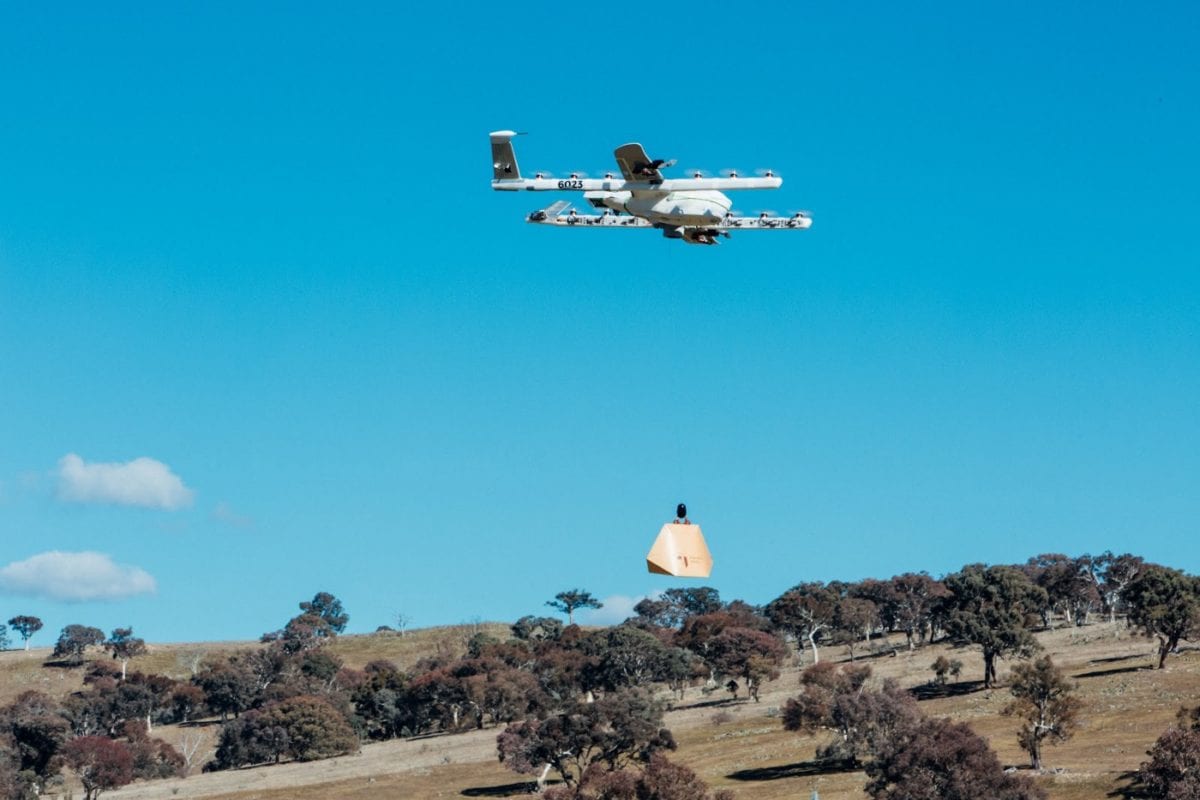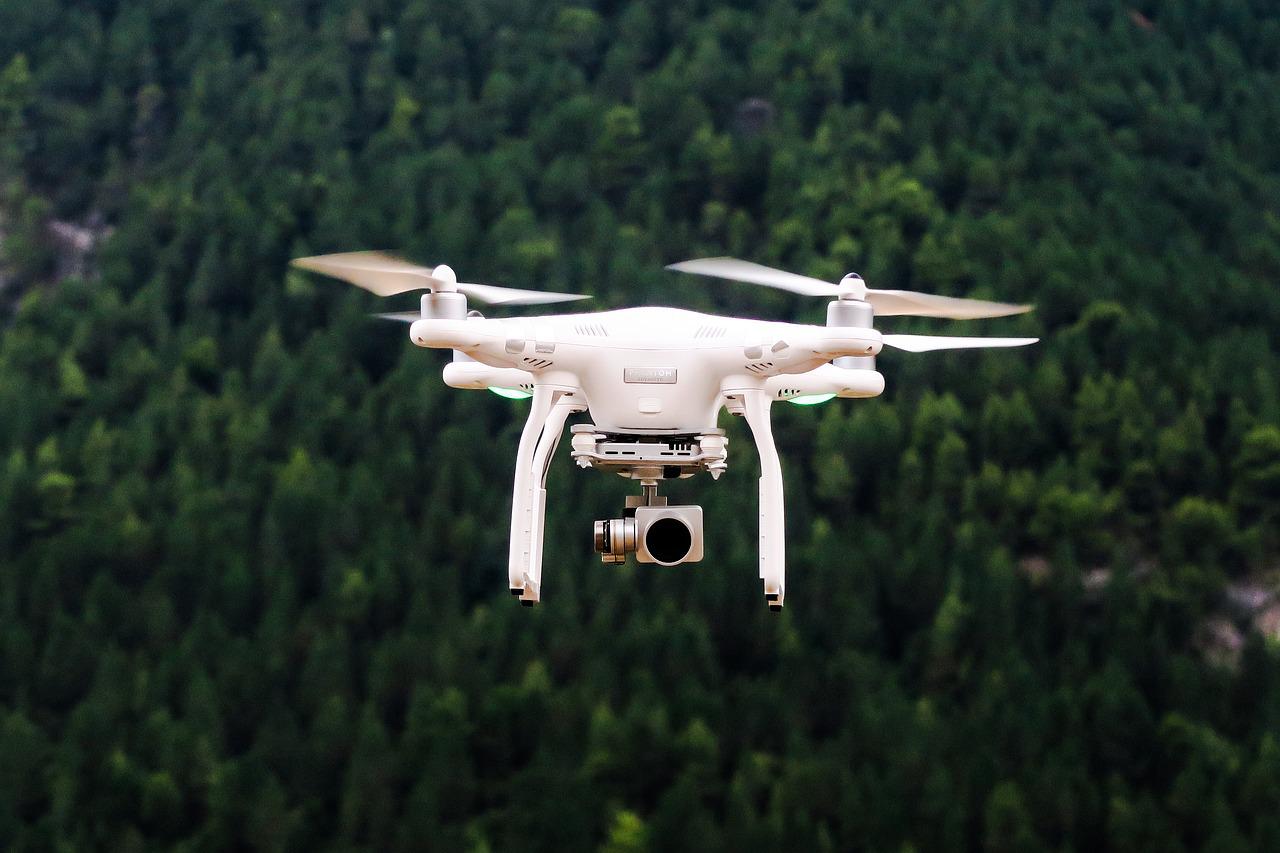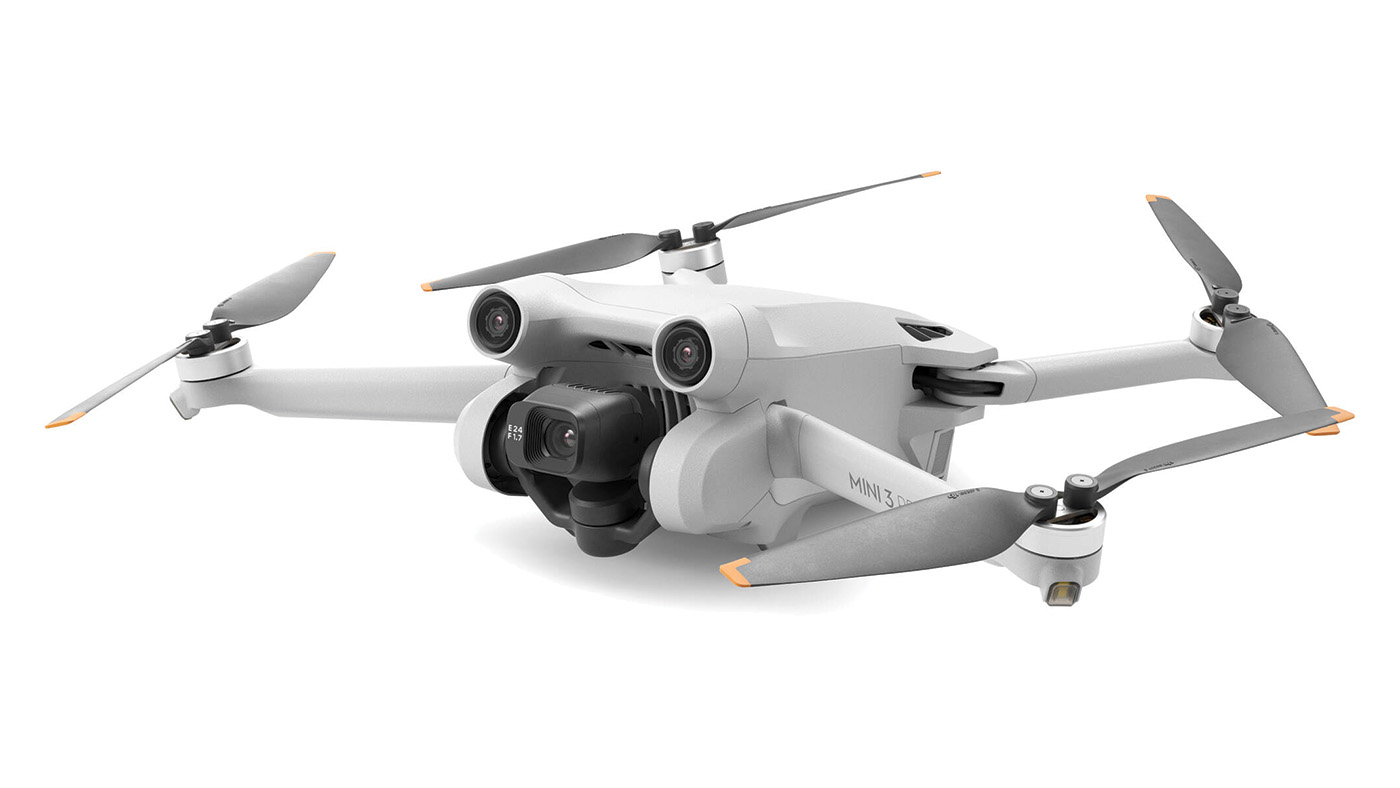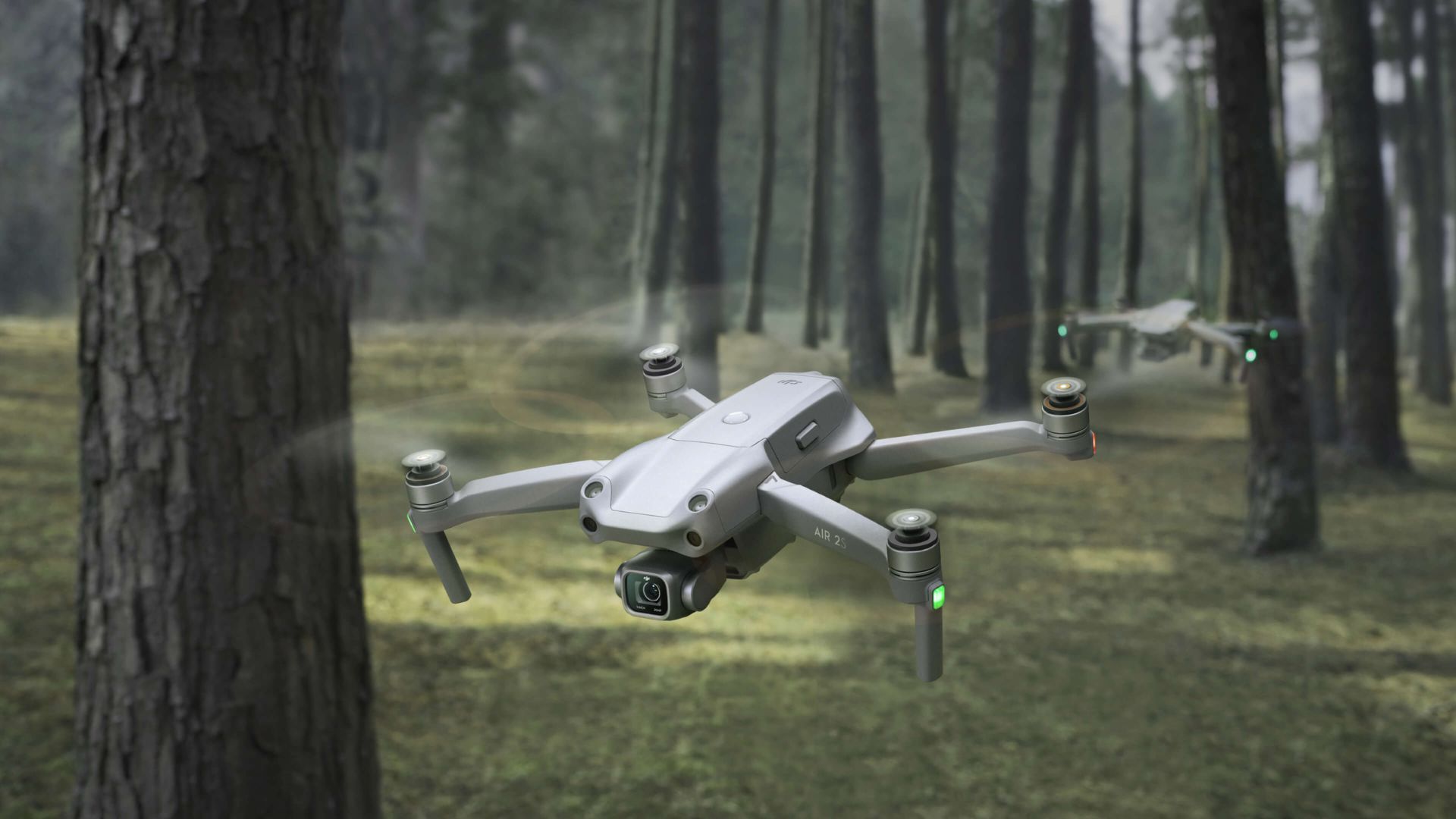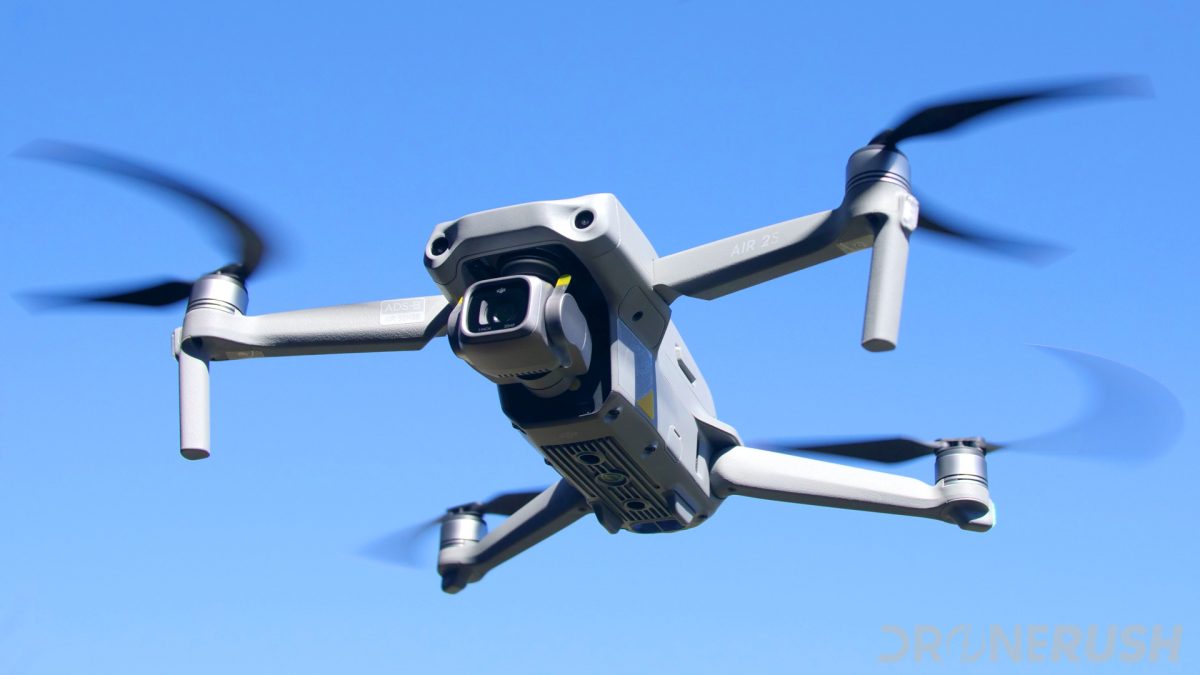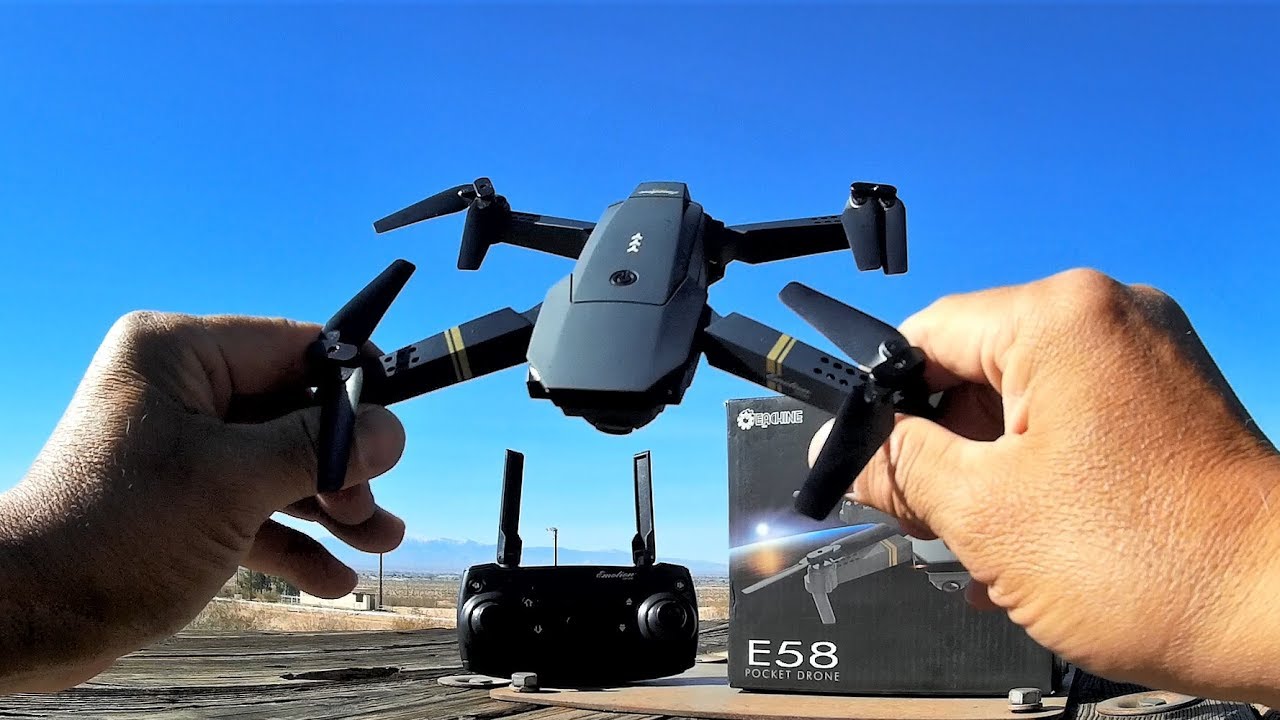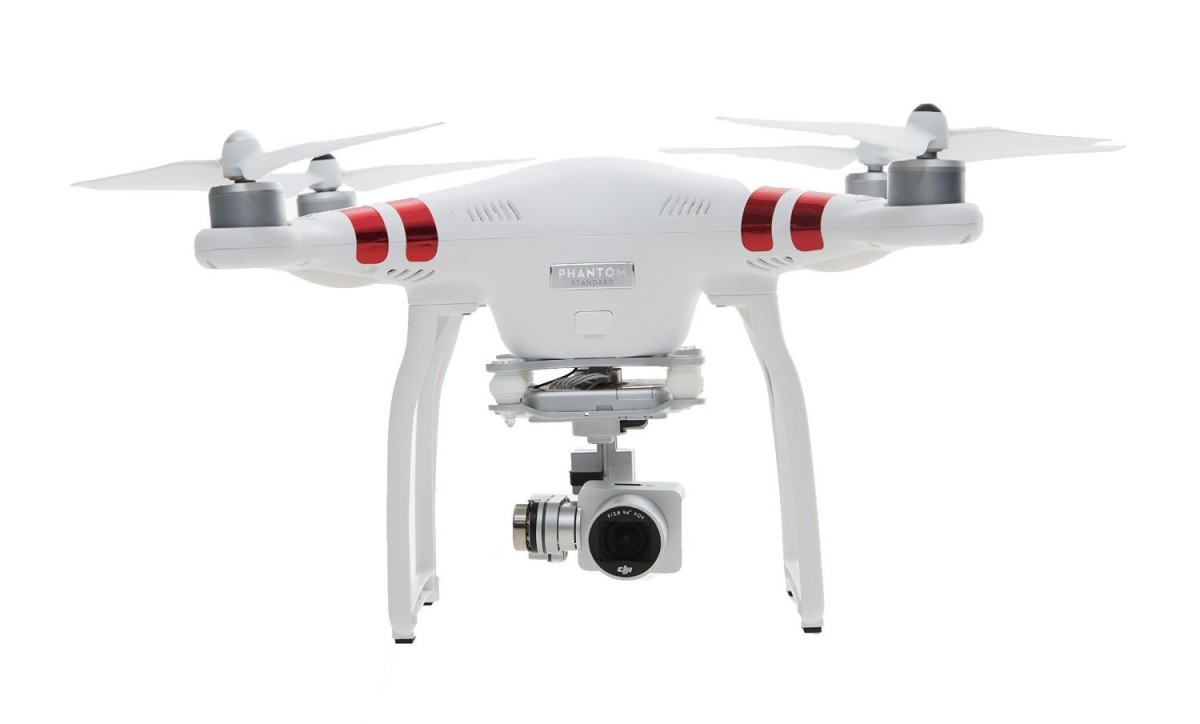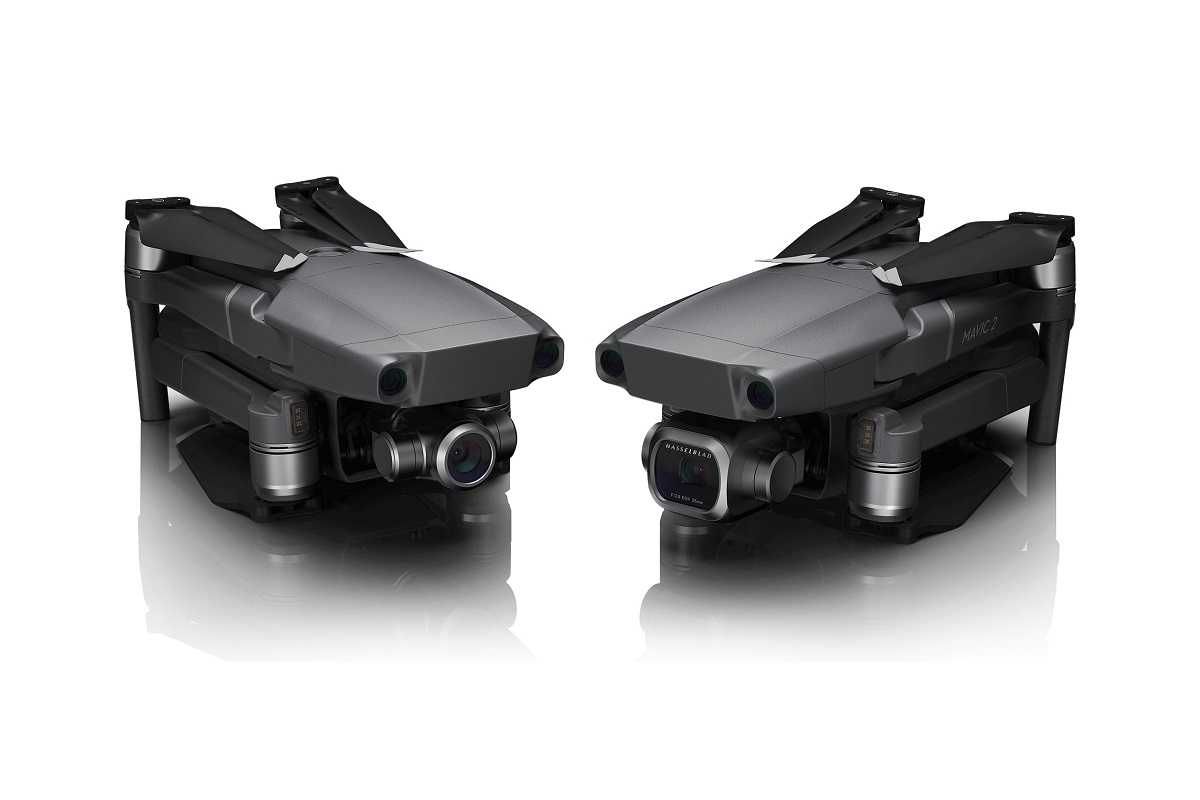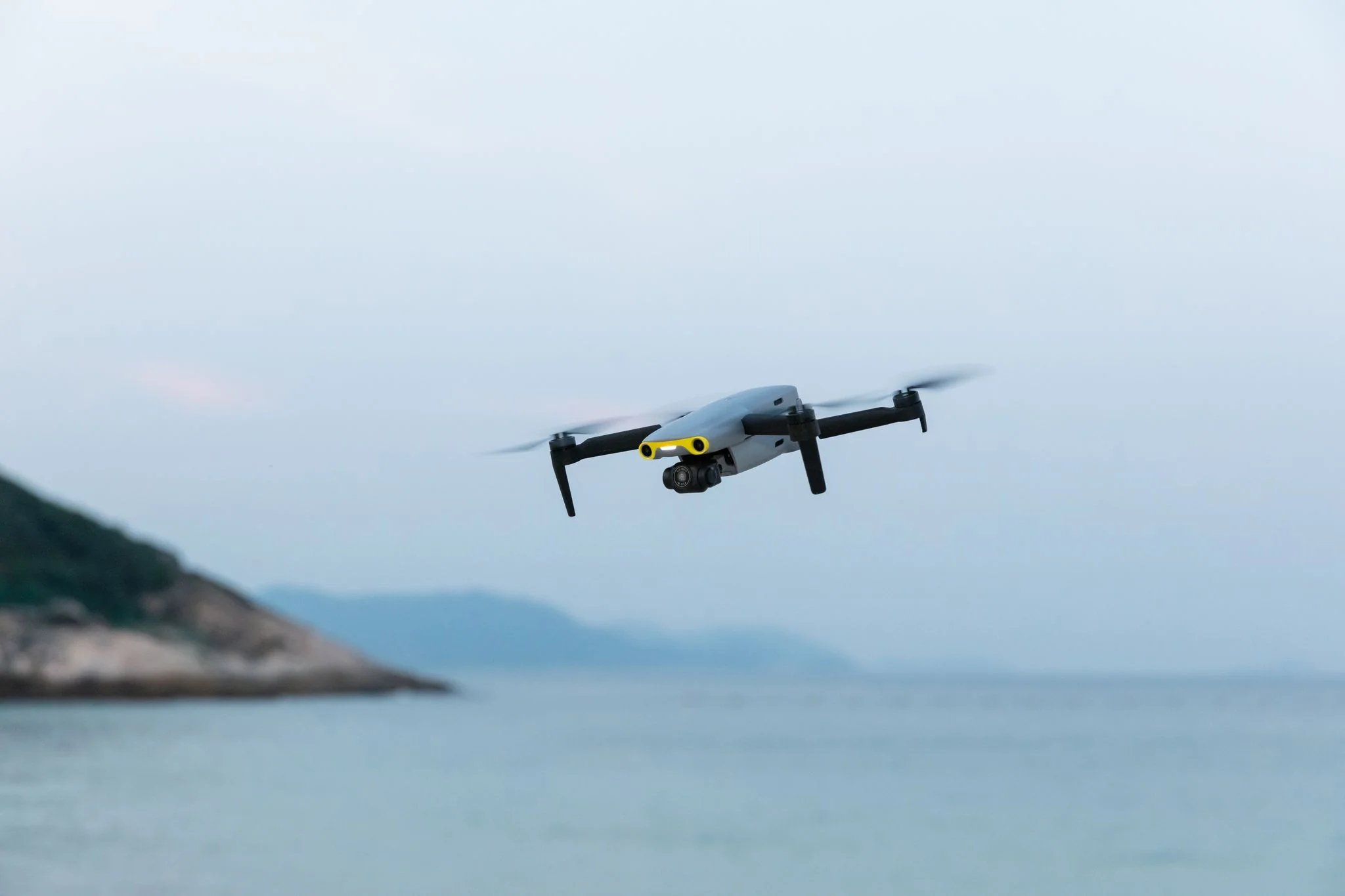Introduction
When it comes to flying drones, one of the most common concerns drone enthusiasts have is the limited range of their flying devices. The range of a drone refers to the distance it can travel and maintain a stable connection between the transmitter and the drone itself. Understanding the limitations of drone range and finding ways to extend it can significantly enhance your drone flying experience.
Whether you are a professional photographer looking to capture breathtaking aerial shots or an outdoor enthusiast eager to explore new territories, extending the range of your drone can open up a world of possibilities. Imagine being able to fly farther, reach higher altitudes, and venture into areas that were previously out of reach.
In this article, we will explore various tips and techniques to extend the range of your drone. From optimizing your drone’s weight to choosing the right frequency, we will delve into the factors that impact range and provide practical solutions that can help you push the limits of your drone’s capabilities.
There is no one-size-fits-all solution when it comes to extending drone range, as different drones may have different limitations and capabilities. However, by implementing the strategies and tips discussed in this article, you can improve your drone’s range and unlock new possibilities for aerial exploration and photography.
Understanding Drone Range Limitations
Before we dive into the tips for extending drone range, it’s essential to understand the factors that limit the range of your drone. By having a clear grasp of these limitations, you can make more informed decisions and take appropriate steps to extend your drone’s range.
One of the primary factors that affect drone range is the frequency at which your drone operates. Drones typically operate on either 2.4GHz or 5.8GHz frequency bands. The 2.4GHz frequency provides greater range but may be more susceptible to interference from other devices such as Wi-Fi routers and microwaves. On the other hand, the 5.8GHz frequency offers less range but tends to experience less interference.
The type and quality of the antenna on your drone also play a crucial role in determining its range. Drones with high-gain antennas can transmit and receive signals over longer distances compared to those with built-in or lower-gain antennas. Upgrading your drone’s antenna can significantly improve its range and signal strength.
In addition to frequency and antenna limitations, your drone’s weight can impact its range. Heavier drones may consume more power, reducing the overall flight time and range. Optimize your drone’s weight by removing unnecessary accessories or using lightweight materials to enhance its range capabilities.
Moreover, weather conditions can influence your drone’s range. Strong winds, rain, and snow can affect the stability of your drone and its signal transmission, often resulting in decreased range. It’s advisable to fly your drone in optimal weather conditions, preferably on calm and clear days.
Furthermore, maintaining a clear line of sight between the drone and the remote controller is essential. Obstacles such as buildings, trees, and hills can obstruct the signal and limit the range of communication between the two devices. Flying in wide-open areas with minimal obstructions can help maximize the range of your drone.
Interference from other electronic devices in the vicinity can also impact your drone’s range. Avoid flying near power lines, radio towers, and areas with heavy electromagnetic interference to minimize signal disruption and maximize range.
By understanding these limitations, you can take appropriate measures to overcome them and extend the range of your drone. In the following sections, we will discuss practical tips and techniques that can help you overcome these limitations and push your drone to its maximum range capabilities.
Tips for Extending Drone Range
Now that we have a solid understanding of the limitations that affect drone range, let’s explore some effective tips and techniques to extend the range of your drone:
- Choose the Right Frequency: Depending on the environment and potential interference, you can choose between the 2.4GHz or 5.8GHz frequency bands. Consider the trade-off between range and interference to select the frequency that works best for your flying conditions.
- Upgrade Your Antenna: Consider upgrading the antenna on your drone and controller to high-gain antennas. These antennas provide stronger signal reception and transmission, significantly enhancing the range of your drone.
- Optimize Your Drone’s Weight: Minimize the weight of your drone by removing unnecessary accessories or using lighter materials. This reduces power consumption and allows for longer flight time and increased range.
- Fly in Optimal Weather Conditions: Choose to fly your drone on calm and clear days to avoid adverse weather conditions like strong winds, rain, and snow. Optimal weather conditions ensure a stable flight and maximize the range of your drone.
- Set Up a Clear Line of Sight: Find a wide-open area with minimal obstructions and maintain a clear line of sight between your drone and the controller. This reduces signal interference and enhances the range of communication between the two devices.
- Reduce Interference: Avoid flying near power lines, radio towers, and areas with heavy electromagnetic interference. These can disrupt the drone’s signal and reduce its range. Choose locations with minimal interference for optimal performance.
- Avoid Obstacles: Plan your flight path carefully and avoid obstacles such as buildings, trees, and hills. These obstructions can weaken the signal and limit the range of your drone. Flying in open areas with fewer obstacles increases your drone’s range potential.
- Use a Signal Booster: Consider using a signal booster or range extender device to amplify the signal between your drone and the controller. These devices can enhance both the strength and range of the signal.
- Update Firmware and Software: Regularly update the firmware and software of your drone and controller. Manufacturers often release updates that improve signal stability, range, and overall performance.
- Consider Using a Range Extender: If you require an even further range extension, you can invest in a dedicated range extender for your drone. These devices can significantly increase the range of your drone by boosting the signal output.
By implementing these tips and techniques, you can extend the range of your drone and unlock new possibilities for exploration and aerial photography. Keep in mind that the effectiveness of each method may vary depending on the specific drone model and flying conditions. Experimentation and careful observation will help you find the best combination of techniques to maximize your drone’s range potential.
Choose the Right Frequency
Choosing the right frequency for your drone is crucial in maximizing its range and minimizing interference. Most drones operate on either the 2.4GHz or 5.8GHz frequency bands, each with its own advantages and limitations.
The 2.4GHz frequency band offers a longer range compared to 5.8GHz, making it a popular choice for drone pilots who prioritize distance. However, this frequency band is also more crowded, as it is used by various devices such as Wi-Fi routers, cordless phones, and Bluetooth devices. The high number of devices operating on this frequency can potentially lead to interference, affecting the signal quality and range of your drone.
On the other hand, the 5.8GHz frequency band offers less range, but it is less congested and experiences less interference. This makes it a suitable choice for flying in areas with a high density of electronic devices or in urban environments where Wi-Fi networks are prevalent. By choosing the 5.8GHz frequency, you can potentially achieve better signal stability and a more reliable connection.
When deciding which frequency to choose, consider the specific flying conditions and the potential sources of interference in your area. If you plan to fly your drone in open spaces with minimal interference, such as rural areas or vast open fields, the 2.4GHz frequency may be a suitable choice to maximize the range. However, if you anticipate flying in urban environments or areas with a high amount of Wi-Fi activity, opting for the 5.8GHz frequency can help mitigate potential interference.
Keep in mind that the range and performance of your drone can be affected by various factors, regardless of the frequency you choose. These include environmental conditions, the presence of physical obstacles, and the quality of your drone’s antenna. It’s important to consider these factors in conjunction with your frequency selection to optimize the range of your drone.
In summary, choosing the right frequency is essential in extending your drone’s range. Evaluate the pros and cons of the 2.4GHz and 5.8GHz frequency bands based on your specific flying conditions, and consider the potential sources of interference in your area. By making an informed decision, you can maximize the range and minimize signal interference, ultimately enhancing your drone flying experience.
Upgrade Your Antenna
Upgrading the antenna on your drone and controller is a highly effective way to improve the range and signal strength of your drone. Many drones come with built-in or standard antennas that may not provide optimal performance, especially in areas with obstacles or long-distance flights.
High-gain antennas are designed to amplify the signal and extend the range of your drone. They can significantly improve signal reception and transmission, allowing for more reliable and stable communication between the drone and the remote controller.
There are various types of antennas available for drone upgrades, including directional and omnidirectional antennas. Directional antennas focus the signal in a specific direction, which can be advantageous for long-range flights where you have a clear flight path. On the other hand, omnidirectional antennas emit the signal in all directions, ensuring a broader coverage area.
It’s essential to choose an antenna that is compatible with your drone model and frequency band. Research and consult with experts or online communities to find recommendations for suitable antennas for your specific drone. Additionally, consider the gain of the antenna, as higher gain typically means greater signal strength and range.
When upgrading your antenna, it’s crucial to properly install and position it. Follow the manufacturer’s instructions or seek professional help if needed. Ensure that the antenna is securely attached to your drone and positioned correctly for optimal signal transmission.
Keep in mind that upgrading your antenna will not only improve the range but also enhance the overall performance of your drone’s signal. You can expect better signal stability, reduced signal dropouts, and improved video transmission quality.
It’s important to note that while upgrading your antenna can extend your drone’s range, it may not overcome other limitations such as interference or environmental factors. Consider upgrading your antenna in conjunction with other tips discussed in this article to optimize your drone’s range capabilities.
In summary, upgrading the antenna on your drone and controller is a worthwhile investment to extend the range of your drone. High-gain antennas can significantly improve signal strength and coverage, leading to more reliable communication between you and your drone. Research and choose the right antenna for your specific drone model and flying conditions, and ensure proper installation for optimal performance. With an upgraded antenna, you can push the limits of your drone’s range and enjoy a more immersive and exciting flying experience.
Optimize Your Drone’s Weight
Optimizing your drone’s weight is a vital aspect of extending its range. The weight of your drone directly affects its power consumption, flight time, and overall performance. By reducing unnecessary weight, you can enhance your drone’s range capabilities and maximize its flight time.
Start by evaluating your drone and identifying any accessories or components that may not be essential for your specific flying needs. Remove any extra attachments, such as propeller guards or additional cameras, that you don’t require for your flight missions.
Consider using lightweight materials when possible. Many drones are constructed using a combination of plastic, carbon fiber, and other composite materials to maintain durability while keeping the weight down. If your drone allows for customization, explore options to replace heavier components with lighter alternatives.
Another aspect of weight optimization is battery choice. LiPo batteries are commonly used in drones due to their high energy density and lightweight nature. However, different battery sizes and capacities are available. Choosing a battery with a higher capacity can increase flight time, but it will also add to the overall weight of the drone. Strike a balance between flight time and weight to achieve an optimal range.
It’s crucial to maintain a proper balance between reducing weight and considering the impact on the stability and durability of your drone. Removing too many essential components or compromising structural integrity can have negative consequences on the overall performance and safety of your drone.
Regular maintenance and cleaning can also contribute to weight optimization. Keep your drone clean and free from dust or debris that may add unnecessary weight. Additionally, inspect and tighten any loose screws or fittings to ensure the drone remains structurally sound.
By optimizing your drone’s weight, you can reduce power consumption and increase flight time, which in turn extends the overall range of your drone. Take the time to assess your drone’s components and consider the trade-offs between weight reduction and functionality. By finding the right balance, you can enhance your drone’s range capabilities and enjoy longer and more adventurous flights.
Fly in Optimal Weather Conditions
The weather conditions in which you choose to fly your drone can have a significant impact on its range and performance. Flying in optimal weather conditions can help maximize your drone’s range and ensure a safe and successful flight.
One of the key weather factors to consider is wind. Strong winds can affect your drone’s stability and control, causing it to drift off course and potentially reducing its range. When the wind speed exceeds the recommended limit for your specific drone model, it’s advisable to postpone your flight and wait for calmer conditions.
Rain and snow can also impact your drone’s performance. Moisture can damage sensitive electronic components and interfere with the drone’s signal transmission. Flying in wet conditions increases the risk of a malfunction or loss of control. It’s best to avoid flying in rainy or snowy weather to protect your drone and maintain its range capabilities.
Opt for clear skies and mild temperatures when planning your drone flights. Calm weather conditions with minimal gusts of wind will provide a stable flight experience and maximize the range of your drone. Clear skies also provide better visibility, allowing you to maintain a clear line of sight with your drone and avoid potential obstacles that may interfere with the signal.
It’s important to stay updated on weather forecasts for your flying location. Check for any warnings or alerts that may affect your ability to fly safely. Many drone flight apps or websites provide real-time weather information specific to drone flying, including wind speed, temperature, and precipitation, which can help you make informed decisions about when to fly.
Even though drones are built to withstand some degree of adverse weather conditions, it’s always better to err on the side of caution. Inclement weather can lead to damage or loss of your drone, and it may also pose a safety risk to people or property in the vicinity. Safety should always be a top priority when planning your drone flights.
In summary, flying in optimal weather conditions is crucial for extending your drone’s range. Choose calm and clear days to minimize the impact of wind and ensure a stable flight experience. Avoid flying in rainy, snowy, or other adverse weather conditions that can potentially damage your drone or interfere with the signal. By flying in the right weather conditions, you can maximize your drone’s range and enjoy safer and more enjoyable flights.
Set Up a Clear Line of Sight
Establishing a clear line of sight between your drone and the remote controller is essential for extending its range. Maintaining a direct and unobstructed line of sight allows for better signal reception and transmission, resulting in a more stable and reliable connection.
When flying your drone, position yourself in an area that provides an unobstructed view of the drone’s flight path. Avoid flying in areas with dense trees, buildings, or other forms of obstruction that can interfere with the signal. These obstructions can weaken the signal strength and limit the overall range of your drone.
Choosing a wide-open area, such as an open field or a park, can provide an ideal environment for maximizing your drone’s range. Minimal obstruction means fewer chances for signal interference and a stronger connection between the drone and the remote controller.
It is important to note that some drones use visual positioning systems, relying on visual cues for maintaining stability and control. Flying in an environment with a clear line of sight allows these systems to function optimally, ensuring accurate positioning and precise control of your drone.
Be mindful of your own position and movement while flying, as obstacles can not only affect the signal but also hinder your ability to maintain visual contact with your drone. Avoid obstructing your own line of sight and ensure you have a clear view of the drone at all times.
While flying within line of sight is essential for safety and compliance with regulations in many countries, it is also a practical consideration for extending the range of your drone. By keeping the drone within your direct line of sight, you can monitor its flight more effectively, make timely adjustments, and react to potential obstacles or changing environmental conditions, all of which contribute to maximizing the range.
Creating a clear line of sight between your drone and the remote controller is a key factor in extending its range. By choosing an open area and avoiding obstructions, you can enhance signal strength, reduce interference, and optimize your drone’s range capabilities. Remember to always prioritize safety and comply with local regulations regarding visual line of sight for drone flights.
Reduce Interference
Reducing interference is essential for extending the range of your drone and ensuring a stable and reliable connection. Interference can weaken the signal and limit the communication between the drone and the remote controller. By minimizing interference, you can optimize the range and performance of your drone.
One of the first steps to reduce interference is to avoid flying near high-power transmission lines, radio towers, and other areas with heavy electromagnetic interference. These sources can produce strong electromagnetic fields that disrupt the drone’s signal and diminish its range. Plan your flight path away from these areas to minimize interference.
Additionally, avoid flying in regions with a high density of Wi-Fi networks or other electronic devices operating on similar frequencies. These devices can cause signal congestion, leading to interference and a decrease in your drone’s range. Choosing flying locations with minimal Wi-Fi traffic can help mitigate this issue.
Another way to reduce interference is to ensure that your drone’s firmware and software are up to date. Manufacturers often release updates that improve signal stability and performance. Regularly check for updates and install them accordingly to take advantage of any enhancements that can optimize your drone’s range.
Properly calibrating your drone’s compass and other sensors can also help minimize interference. Following the manufacturer’s instructions, carry out the calibration process in an open area away from metal structures or objects that could disrupt the sensor readings. A well-calibrated drone can reduce the chances of interference and improve overall performance.
Using a dedicated frequency for your drone’s controller can also reduce interference. Some transmitters offer the option to manually select frequencies or channels with less traffic. Experiment with different frequencies to find the one that provides the best range and minimal interference for your specific flying environment.
Lastly, employing techniques such as frequency hopping or adaptive frequency selection can help combat interference. These techniques allow your drone to automatically switch to less crowded frequencies when it detects interference. Check if your drone or controller supports these features, and enable them if available.
By minimizing interference, you can optimize your drone’s range and maintain a strong and stable signal connection. Avoiding areas with high electromagnetic interference, updating firmware and software, calibrating sensors, and employing frequency selection techniques all contribute to reducing interference and extending your drone’s range.
Avoid Obstacles
Avoiding obstacles is crucial for extending the range of your drone and ensuring safe and successful flights. Obstacles such as buildings, trees, and hills can interfere with the signal and limit the overall range of your drone. By being mindful of your surroundings and avoiding obstacles, you can maximize your drone’s range potential.
One of the best ways to avoid obstacles is to plan your flight path carefully. Before taking off, survey the area for any potential obstacles that may impede your drone’s flight. Look for trees, tall buildings, power lines, and other structures that could interfere with the signal or pose a risk of collision.
Choosing an open area for takeoff and flying in wide-open spaces can greatly reduce the chances of encountering obstacles. Open fields, parks, or large clearings provide ample space for your drone to maneuver without the risk of signal obstruction or physical collision.
It’s important to maintain a clear line of sight with your drone throughout the flight. This means keeping the drone within your field of vision and being able to visually monitor its movement and surrounding environment. By maintaining visual contact, you can easily spot potential obstacles and adjust your flight path accordingly.
Utilize the obstacle avoidance technology on your drone, if available. Many modern drones are equipped with sensors and collision avoidance systems that help detect and avoid obstacles automatically. However, it’s important to note that these systems are not foolproof and should not be solely relied upon. You should still exercise caution and remain vigilant while flying.
It’s also essential to stay aware of any temporary obstacles that might appear during your flight, such as flying birds, moving vehicles, or other drones. Always be prepared to adjust your flight path or altitude to avoid potential collisions and maintain a safe distance from other objects or aircraft.
Before flying in a new location, research and gather information about any specific regulations or restricted areas that may be present. Some areas may have restrictions on drone flights or require special permits. Familiarizing yourself with airspace regulations and adhering to them will not only help you avoid obstacles but also ensure legal and responsible drone operation.
By actively avoiding obstacles, planning your flight path, maintaining a clear line of sight, and using obstacle avoidance technology when available, you can optimize the range of your drone while mitigating the risk of encountering obstacles during your flights.
Use a Signal Booster
Using a signal booster can be an effective way to extend the range of your drone and improve its signal strength. Signal boosters amplify the signal between your drone and the remote controller, allowing for increased range and a more stable connection.
Signal boosters come in various forms, including built-in options for certain drone models or external devices that can be attached to your drone or controller. These boosters work by amplifying the power output of the transmitter, thereby extending the signal range.
When using a signal booster, it’s important to choose one that is compatible with your drone model and frequency band. Ensure that the booster is designed to support the specific frequency range used by your drone to avoid any compatibility issues.
Installation and setup of the signal booster will vary depending on the specific model and design. It’s essential to carefully follow the manufacturer’s instructions and recommendations for proper installation. Improper installation could potentially interfere with the signal or lead to other issues.
While signal boosters can significantly enhance the range and signal strength of your drone, it’s important to remember that they are not a magical solution that will overcome all limitations. Factors such as weather conditions, line of sight, and interference can still affect your drone’s range, even with the use of a signal booster. Therefore, it’s advisable to combine the use of a signal booster with other tips and techniques discussed in this article to maximize your drone’s range potential.
Signal boosters can be particularly beneficial when flying in areas with potential signal interference, such as urban environments with high Wi-Fi activity or crowded radio frequencies. They can help overcome signal congestion and improve the overall signal quality, leading to a more reliable and extended range for your drone.
Before investing in a signal booster, research different models and brands, read reviews, and consider feedback from other drone enthusiasts. Choose a reputable and reliable product that has been proven to work effectively with your specific drone model. Consulting with experts or seeking recommendations from online drone communities can provide valuable insights into the best signal booster options.
By utilizing a signal booster that is compatible with your drone and setup, you can enhance the range and signal strength of your drone. Combined with other tips and techniques, a signal booster can help you overcome interference and push the boundaries of your drone’s capabilities.
Update Firmware and Software
Regularly updating the firmware and software of your drone and controller is crucial for maintaining optimal performance and maximizing the range of your drone. Manufacturers often release updates that include bug fixes, performance enhancements, and signal stability improvements.
Updating the firmware and software of your drone ensures that you are utilizing the latest advancements and optimizations specific to your drone model. These updates often address known issues and can significantly enhance the range and overall functionality of your drone.
Check the manufacturer’s website or the official app for your drone to stay informed about the latest updates. Follow the provided instructions to download and install the updates onto your drone and controller. Some drones can be updated wirelessly through the app, while others may require a USB cable connection to a computer.
Before updating, it is recommended that you fully charge the drone’s battery and ensure a stable and reliable internet connection. Interrupted or incomplete updates can potentially lead to software glitches or even a loss of functionality.
Keep in mind that firmware updates may vary in frequency and importance, so it’s a good practice to periodically check for updates rather than waiting for a major issue to arise. Set a reminder to check for updates every few months or whenever you plan to embark on an important flight.
In addition to updating the firmware and software for your drone, also make sure to update any associated apps or software that you use for flight planning, monitoring, or camera control. These updates often include performance improvements and bug fixes that can enhance the overall drone experience and range.
By regularly updating the firmware and software, you can take advantage of the latest advancements and optimizations specific to your drone. These updates can improve the stability of the signal, enhance flight controls, and overall extend the range capabilities of your drone.
Remember that updating any software or firmware carries risks, so it’s essential to follow the manufacturer’s instructions closely and ensure a stable and reliable connection during the update process. With up-to-date firmware and software, you can optimize your drone’s range and enjoy a more enhanced and reliable flying experience.
Consider Using a Range Extender
If you need to significantly extend the range of your drone, considering a range extender can be a viable option. Range extenders are dedicated devices designed to amplify the signal between your drone and the remote controller, allowing for greater range and improved signal strength.
A range extender works by utilizing advanced antenna technology to boost the signal transmission and reception capabilities of your drone’s controller. These devices can extend the range by several hundred meters or more, depending on the specific model and conditions.
Range extenders typically come in the form of external devices that attach to your drone or controller. They offer various mounting options to ensure compatibility with different drone models and setups.
When selecting a range extender, it’s essential to consider factors such as compatibility with your specific drone model and frequency band, as well as the range extension capabilities it offers. Research different models, read reviews, and choose a reputable brand that has a proven track record of performance and reliability.
Installation and setup instructions will vary depending on the range extender you choose. Follow the manufacturer’s guidelines carefully to ensure the proper installation of the device for optimal performance.
Keep in mind that range extenders may require additional power supply or batteries to function effectively. Make sure to check the power requirements and plan accordingly to have sufficient power for both your drone and the range extender during flight.
It’s important to note that using a range extender may introduce additional complexity and potential interference. Other wireless devices operating on similar frequencies and environmental factors can still affect the range and signal quality, even with the use of a range extender.
Before utilizing a range extender, it’s recommended to test the device in a controlled environment to assess its performance and ensure reliable operation. Get familiar with its functionality and limitations to make the most out of the extended range capabilities.
Range extenders can be a valuable tool for professional drone photographers, drone racing enthusiasts, or anyone who requires an extensive range for their drone flights. However, they may not be necessary for every type of drone flying scenario. Consider your specific needs and flying requirements before investing in a range extender.
By incorporating a range extender, you can significantly extend the range of your drone, increasing your flying capabilities and unlocking new possibilities for aerial exploration and photography.
Conclusion
Extending the range of your drone is an exciting prospect that opens up new possibilities for exploration and aerial photography. By implementing the tips and techniques discussed in this article, you can optimize your drone’s range and enhance its overall performance.
Choosing the right frequency, upgrading your antenna, optimizing your drone’s weight, flying in optimal weather conditions, setting up a clear line of sight, reducing interference, avoiding obstacles, using a signal booster, updating firmware and software, and considering a range extender are all effective strategies for extending your drone’s range.
Remember that each drone model and flying condition is unique, so it’s important to experiment and find the combination of techniques that work best for you. Always prioritize safety and comply with local regulations when flying your drone.
By understanding the limitations that affect drone range and taking appropriate measures, you can enhance your drone flying experience and capture stunning aerial footage with confidence and ease.
So get out there, apply these tips, and push the limits of your drone’s range capabilities. Explore new horizons, capture breathtaking vistas, and take your drone flying to new heights.







